Land Invertebrates
Media
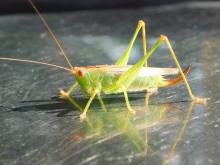
Species Types
Scientific Name
Orchelimum vulgare
Description
The common meadow katydid is aptly named: it is well-known and widespread in the eastern United States. Listen for its distinctive call — like a pulsating circular lawn sprinkler ratcheting around — in midsummer to the first hard frost.
Media
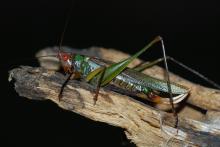
Species Types
Scientific Name
Orchelimum nigripes
Description
The black-legged meadow katydid is a gorgeous, strikingly marked katydid that hides among foliage. They are secretive and quick to hop away or move to the other side of a plant stem.
Media
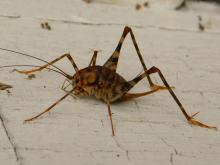
Species Types
Scientific Name
About 150 species in North America north of Mexico
Description
Camel crickets and cave crickets are odd-looking, hump-backed insects that are commonly found in caves, basements, cellars, and similar places.
Media
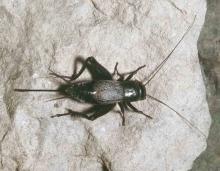
Species Types
Scientific Name
Gryllus spp., Acheta domesticus, and others in subfamily Gryllinae
Description
Field crickets and house crickets are celebrated singers. There are several species in Missouri.
Media

Species Types
Scientific Name
About 30 species in North America north of Mexico
Description
Members of the pygmy grasshopper family are small and have a distinctively elongated pronotum — this plate, which only covers the shoulders of most other grasshoppers, extends back to cover the abdomen in this family. Most live along streams and in other wet habitats.
Media
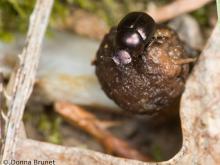
Species Types
Scientific Name
Canthon spp.
Description
Tumblebugs in genus Canthon are usually seen on, near, and beneath poop. They are sometimes seen rolling dung balls away from the original heap, heads down and pushing the ball backward with their hind legs.
Media

Species Types
Scientific Name
About 1,700 species in North America north of Mexico
Description
The scarab beetle family is very large, with breathtaking variety — and often great beauty. Many scarabs are large and colorful.
Media

Species Types
Scientific Name
Euphoria sepulcralis
Description
The dark flower scarab is a scarab beetle that apparently eats pollen, nectar, and perhaps other parts of flowers in late spring, sometimes becoming an agricultural pest. The larvae grow up beneath manure or other decaying materials.
Media
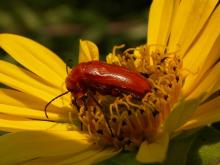
Species Types
Scientific Name
Nemognatha spp.
Description
Nemognatha blister beetles are leathery beetles often seen visiting flowers. There are nearly 30 species in North America.
Media
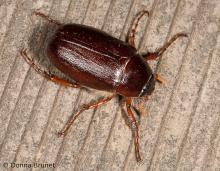
Species Types
Scientific Name
Phyllophaga spp.
Description
May beetles, or June bugs, are common beetles that are named for the months they are most numerous. Clumsy walkers and fliers, they are usually brownish and are attracted to lights at night.
See Also



Media

Species Types
Scientific Name
Cisseps fulvicollis
Description
The yellow-collared scape moth is more often “orange-collared.” And whether you think it looks more like a firefly or a wasp, it’s still a moth!
Media

Species Types
Scientific Name
Nearly 150 species in North America north of Mexico
Description
Slim, delicate plume moths are instantly recognizable by their T-shaped silhouette, long legs, and muted shades of tan and brown. It can be hard to separate the various species.
Media

Species Types
Scientific Name
Pyrrharctia isabella
Description
Not many people know the adult Isabella tiger moth when they see one, but we’re all acquainted with its caterpillar, the woolly worm, or woolly bear.
About Land Invertebrates in Missouri
Invertebrates are animals without backbones, including earthworms, slugs, snails, and arthropods. Arthropods—invertebrates with “jointed legs” — are a group of invertebrates that includes crayfish, shrimp, millipedes, centipedes, mites, spiders, and insects. There may be as many as 10 million species of insects alive on earth today, and they probably constitute more than 90 percent all animal species.





















